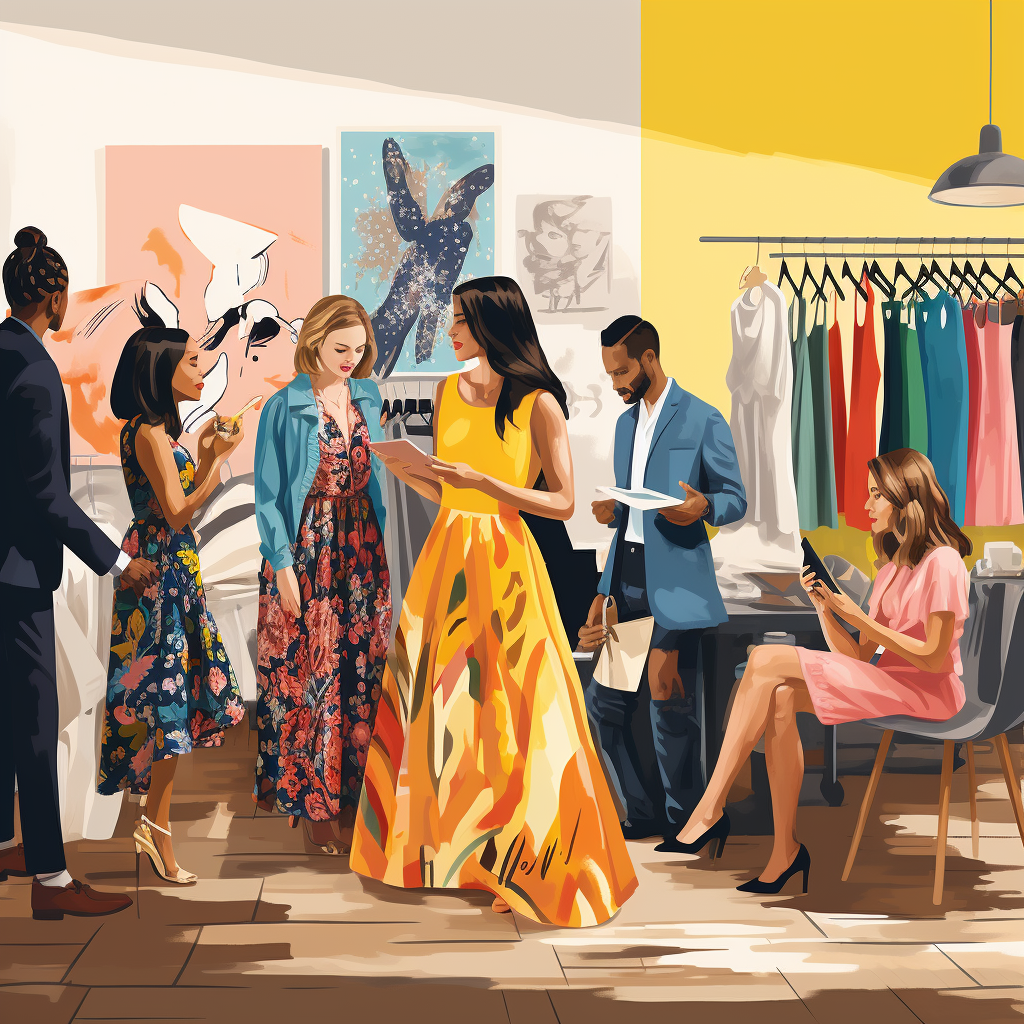How buying our clothes used took over the market, and the conversation, in 2023
Out With
The New,
In With
The Old
I couldn’t believe it. I was about to spend $35 to check an empty suitcase at JFK.
This is when I knew our closets were about to change.
It was 2016, and I was returning to California from a shopping trip to NYC. A frequent visitor to the city, I’d always bring an extra bag for new clothes. But this time, it came back empty. I hadn’t bought anything.
What happened? That was the year I started using Rent the Runway. Almost immediately, my shopping changed. Why spend $250 on a trendy sweater when I could just rent one – or three?
Throw in TheRealReal and a few more upstarts, and today, I doubt I’m the only one leaving NYC empty-handed.
It’s a monumental shift. The secondary fashion market was once just that – secondary. But now, it increasingly seems to come first. Rentals, resales, and vintage are taking over our closets, forcing brands to rethink where and how they operate. So far, they’ve been slow to adapt. But with the $25B+ market predicted to grow 10 to 15 percent per year over the next decade, it’s something they can no longer afford to ignore.

Behind the shift is a radically new mindset around used clothes. In the past, few found value in vintage, rental, or resale. Today, that perception is changing. Now, new doesn’t always equal best.
Once considered a way to save money, for example, rentals are now a great way to move quickly and stay on trend. Meanwhile, vintage is all about being more creative. Why limit yourself to the cadence and style of global fashion brands, the thinking goes, when you can express yourself more authentically via the vintage market – which is larger and far more diverse. Now, primary is almost “basic”, while secondary is seen as unique.
Though the mindset is important, we wouldn’t be here without technology. Startups like TheRealReal have brought much-needed confidence and trust, assuring buyers of both quality and authenticity. Particularly when it comes to luxury, the value of these platforms can’t be overstated, and their growth (predicted at 25-30 percent annually) is in many ways driving that of the sector.
To be fair, this has not gone unnoticed, with brands already changing the way they make clothes. Mass fashion retailers, for example, typically deal in three types of garments: basics, which they sell year-round; seasonal basics, for roughly half the year; and “quick trends”, which last only a few months. With rentals increasingly taking over seasonal and quick trends, brands are leaning more heavily into quality-made basics. Soon, we may even see them creating specific lines just for rental, like the outlet-only lines of the 90s.
But this is only the tip of the iceberg. With technology bringing the secondary market out of stores and onto the web, brands can finally participate in – and capture – a share of the value created beyond the original point of sale. The opportunity is significant. While those that wait on the sidelines will continue to see their products traded secondhand, says a recent McKinsey study, “done prudently, brand entry should not erode margins, and would result in only limited cannibalization.”
Of the many ways brands can monetize the secondary market, the most obvious is taking some percentage of value from transactions involving their products. Many are beginning to explore this, particularly through take-back and trade-in programs. DÔEN’s “Hand Me Dôen”, for example, helps shoppers trade in used items, with the brand facilitating shipping, inspection, and providing store credit once approved. Members are even rewarded, gaining early access to new collections. As DÔEN puts it, the program is an integral part of its commitment to moving past linear business models, helping customers find “joy and value – both financial and emotional – in wearing and sharing pre-loved garments.”
For all its upside, the secondary market is not without its risks. Brand control is particularly challenging. Today, more and more customers buy luxury primarily (or even only) through these channels. This creates a problem: spend five minutes on eBay and you’ll find countless luxury items being sold, for lack of a better word, cheaply. Think bad photos with harsh lighting, or LV sunglasses in a Chanel case. Compare that to the billions spent crafting the perfect image at the original point of sale – on models, photographers, advertising, and expensive retail stores – and the gap becomes painfully clear.
Succeeding in this new environment means adapting to both sides of the coin. Leading brands will take steps not only to seize the value presented by this longer lifecycle, but to protect themselves as their garments work their way through it.
Do you agree with this?
Do you disagree or have a completely different perspective?
We’d love to know

